
Improving the quality of life
Physical inactivity cuts years off a person’s life and leads to more years of illness. This is especially the case for people with mobility disabilities, 38 percent of whom are physically inactive. That is why Musholm has been designed as a place that motivates everyone – regardless of their disability – to lead an active life. That’s because it makes sense not just for the individual but for society as a whole, which will save more than DKK 300 million a year on healthcare costs – assuming that the Musholm concept is implemented in the rest of Danish society.
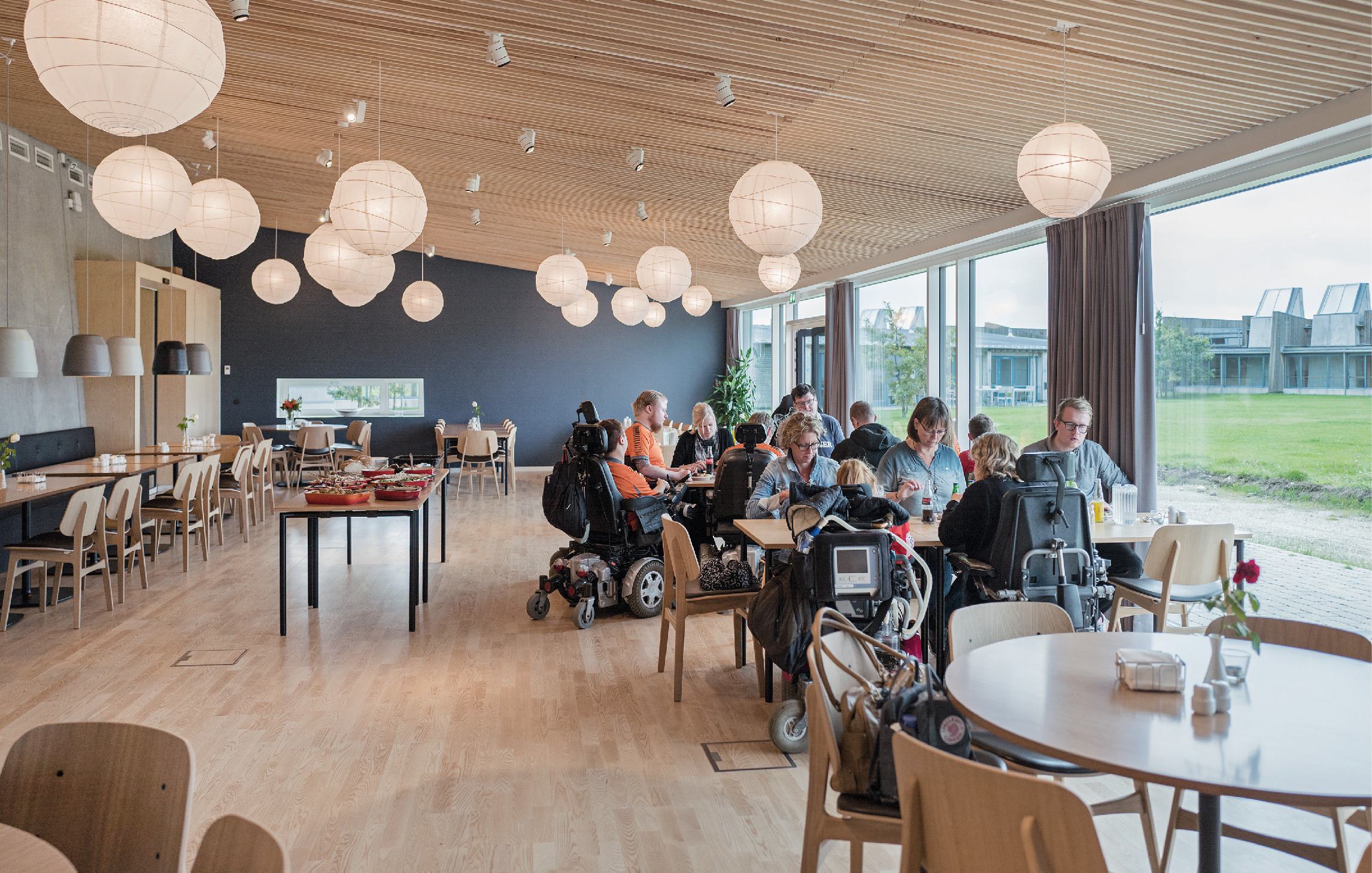
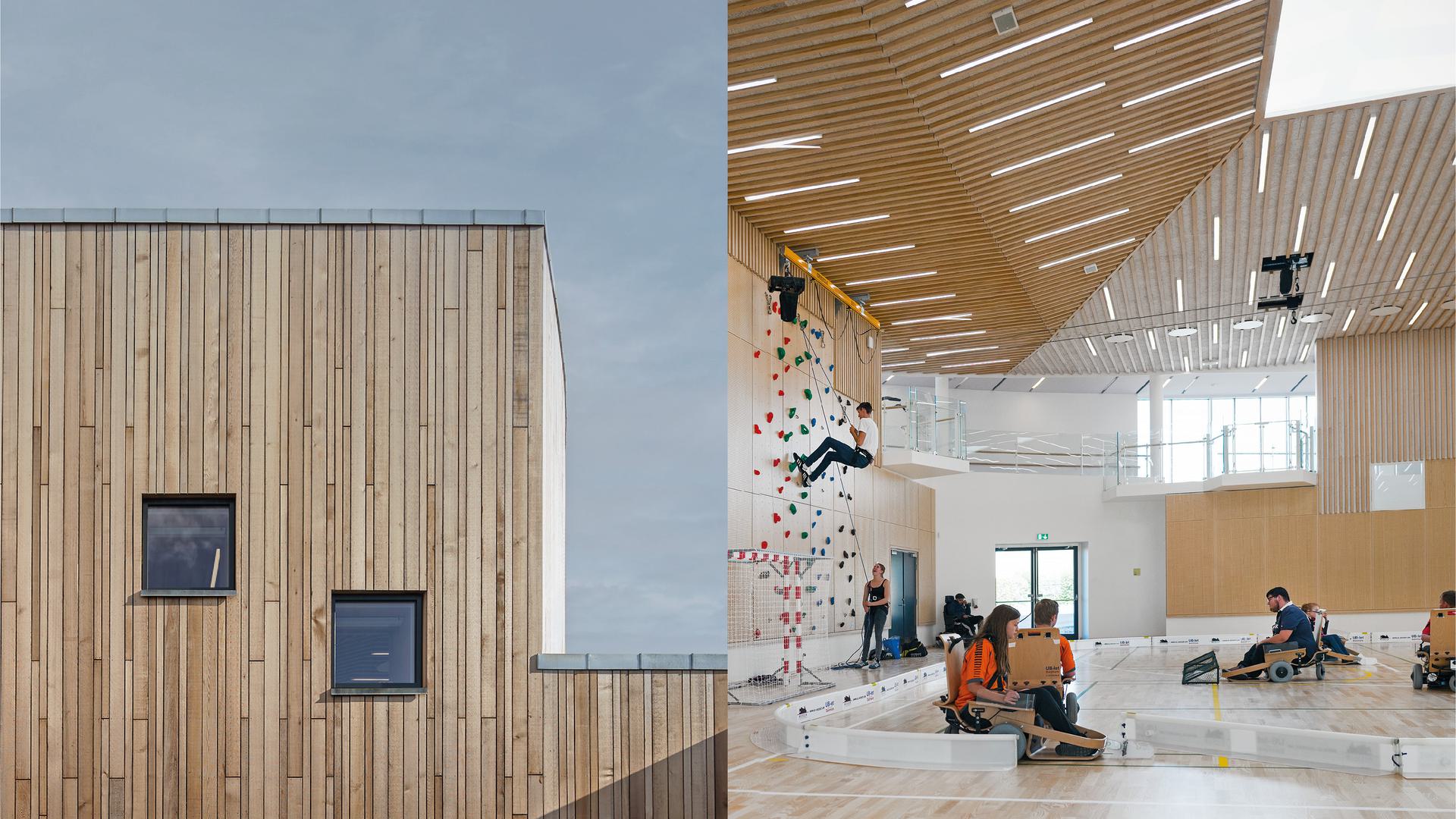
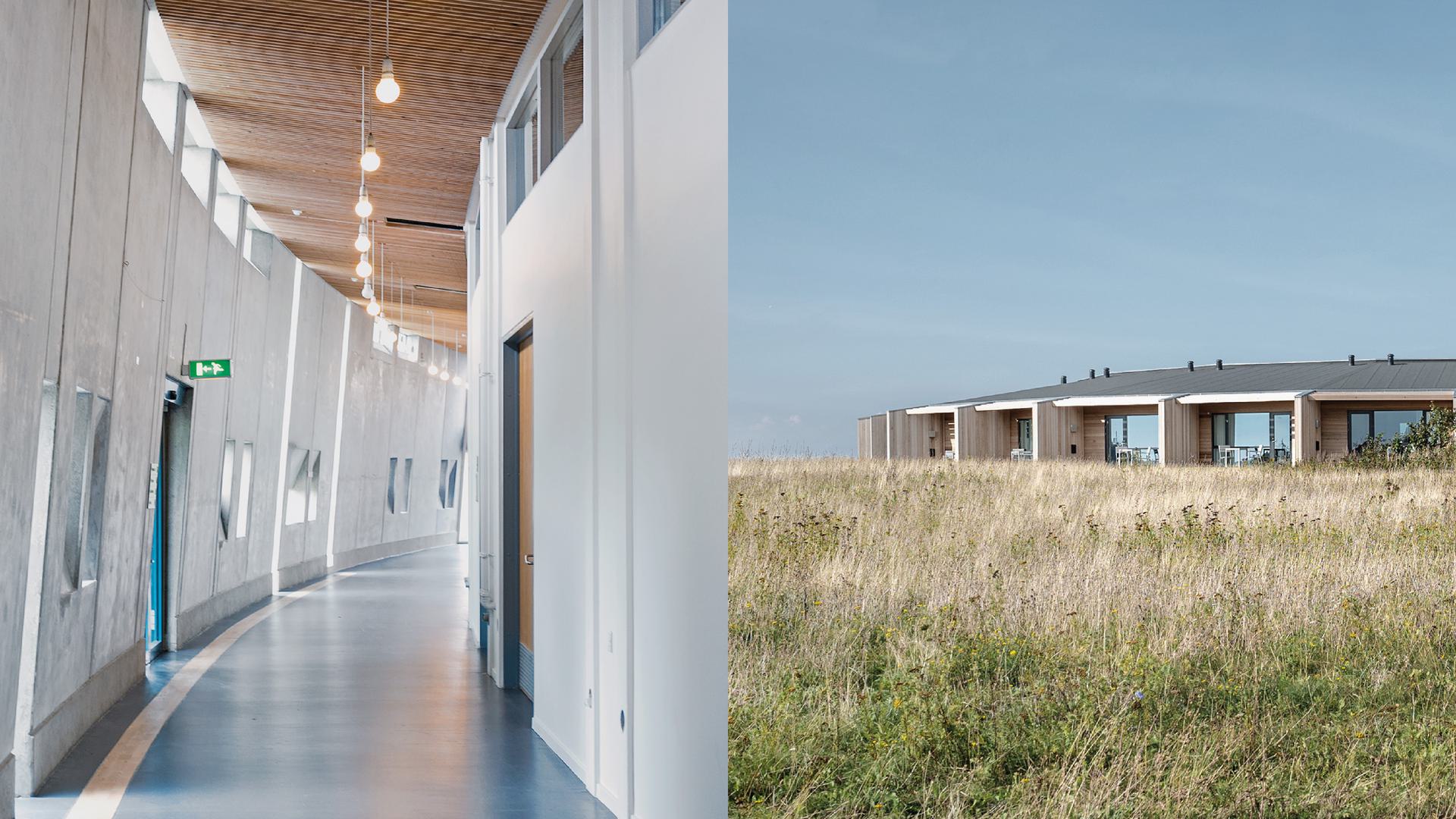
Impactfull perspectives
-
300.000.000DKK million on healthcare costs the Danish society will be able to save each year
Mobility for people regardless of their disabilities
Musholm has been designed as a multifunctional powerhouse, where holiday homes and a variety of shared facilities give people with disabilities the opportunity to lead an active life. This is especially true of the multi-purpose hall, where a 110-metre long activity ramp encourages physical activity. With its landings and recreational zones, the ramp brings the visitors up onto a plateau where wheelchair users can engage in activities such as trying their hands at a climbing wall and the world’s first cable-lift for wheelchair users. In that way, Musholm becomes a place that gets people moving, no matter their disabilities, and gives them the opportunity to play, have experiences and form new social bonds.
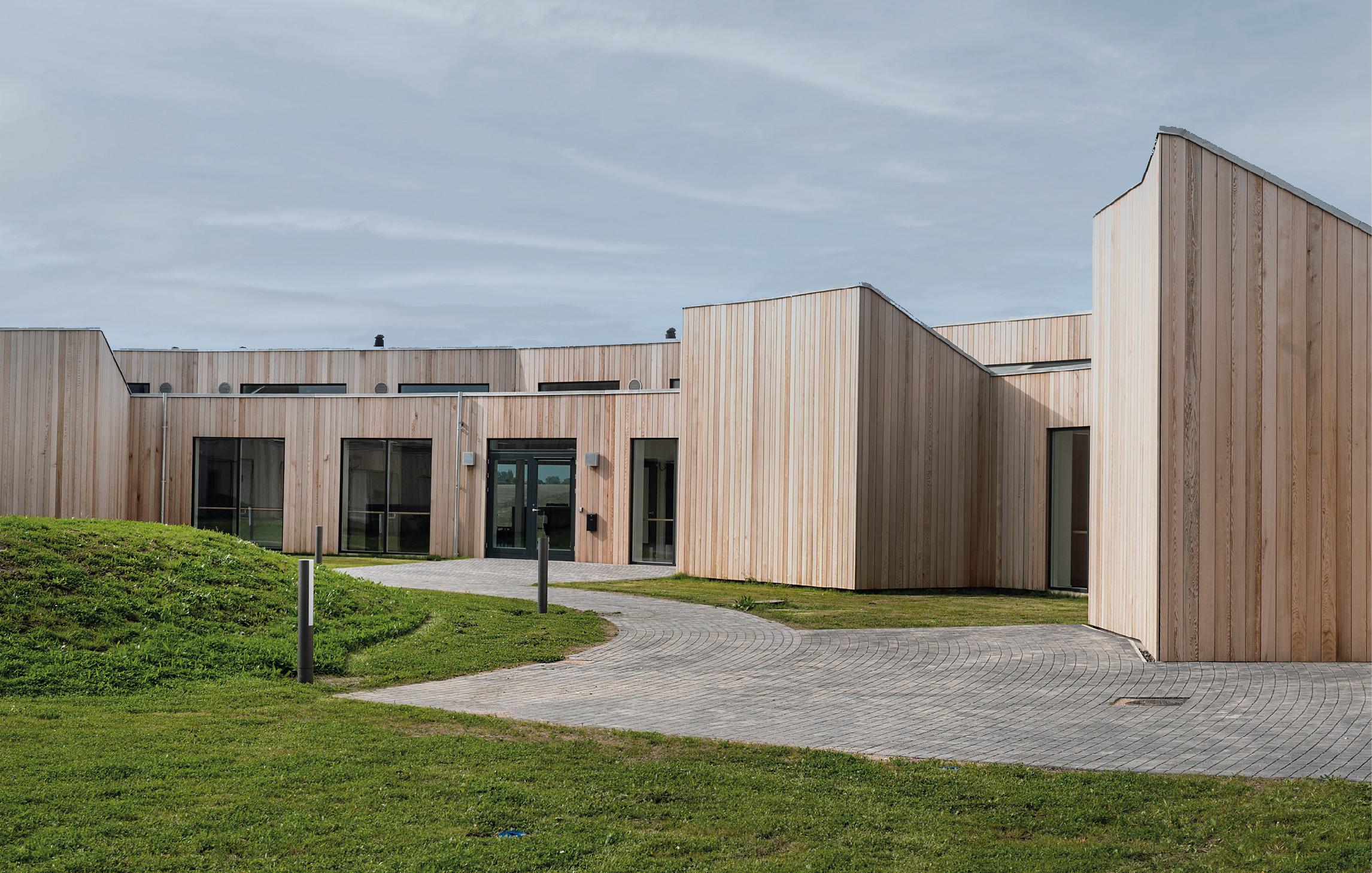

The notion that architecture can be identical to freedom is one we’ve never encountered before.Conclusion of the Alexandra Institute’s anthropological field study of Musholm

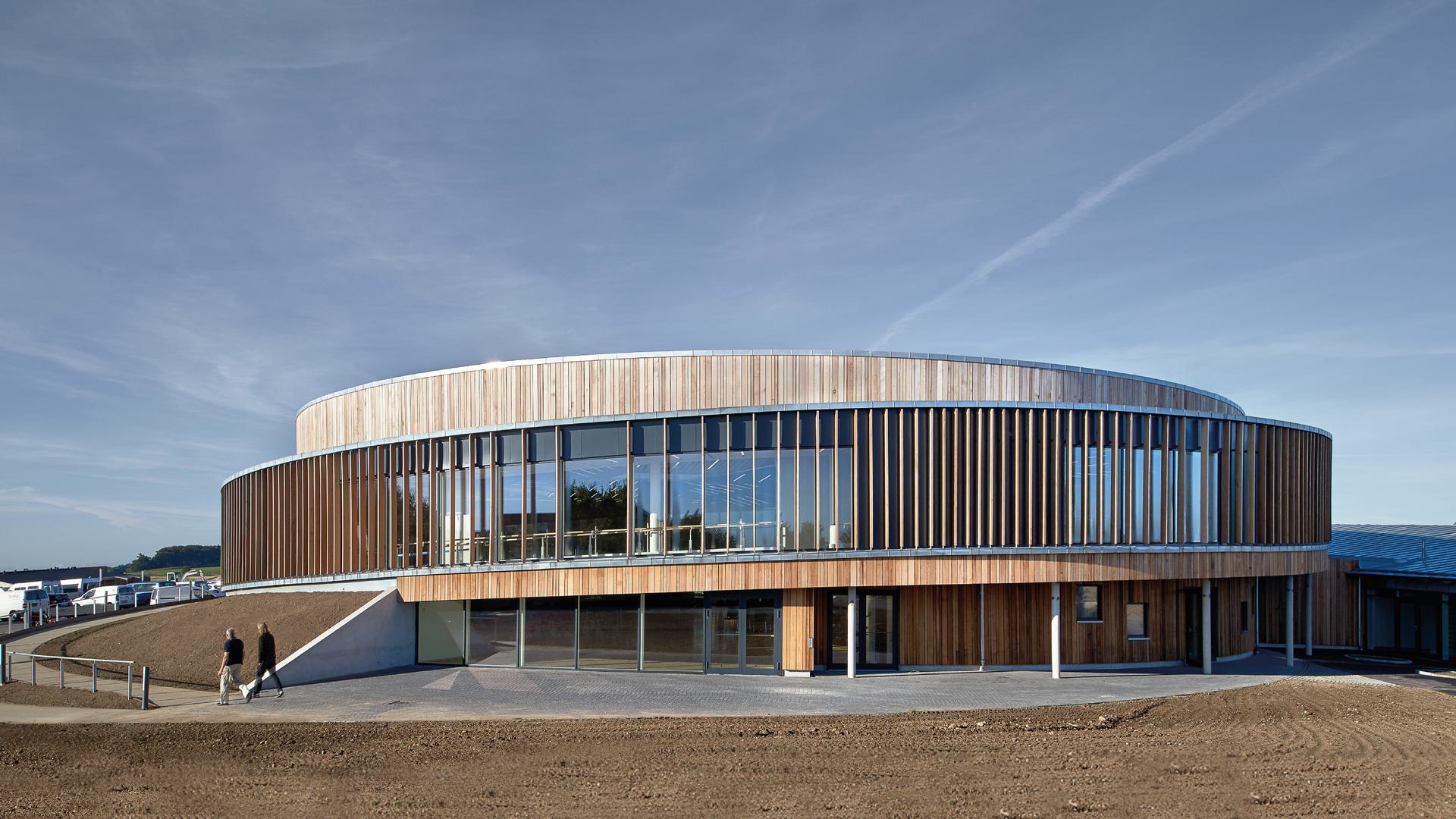
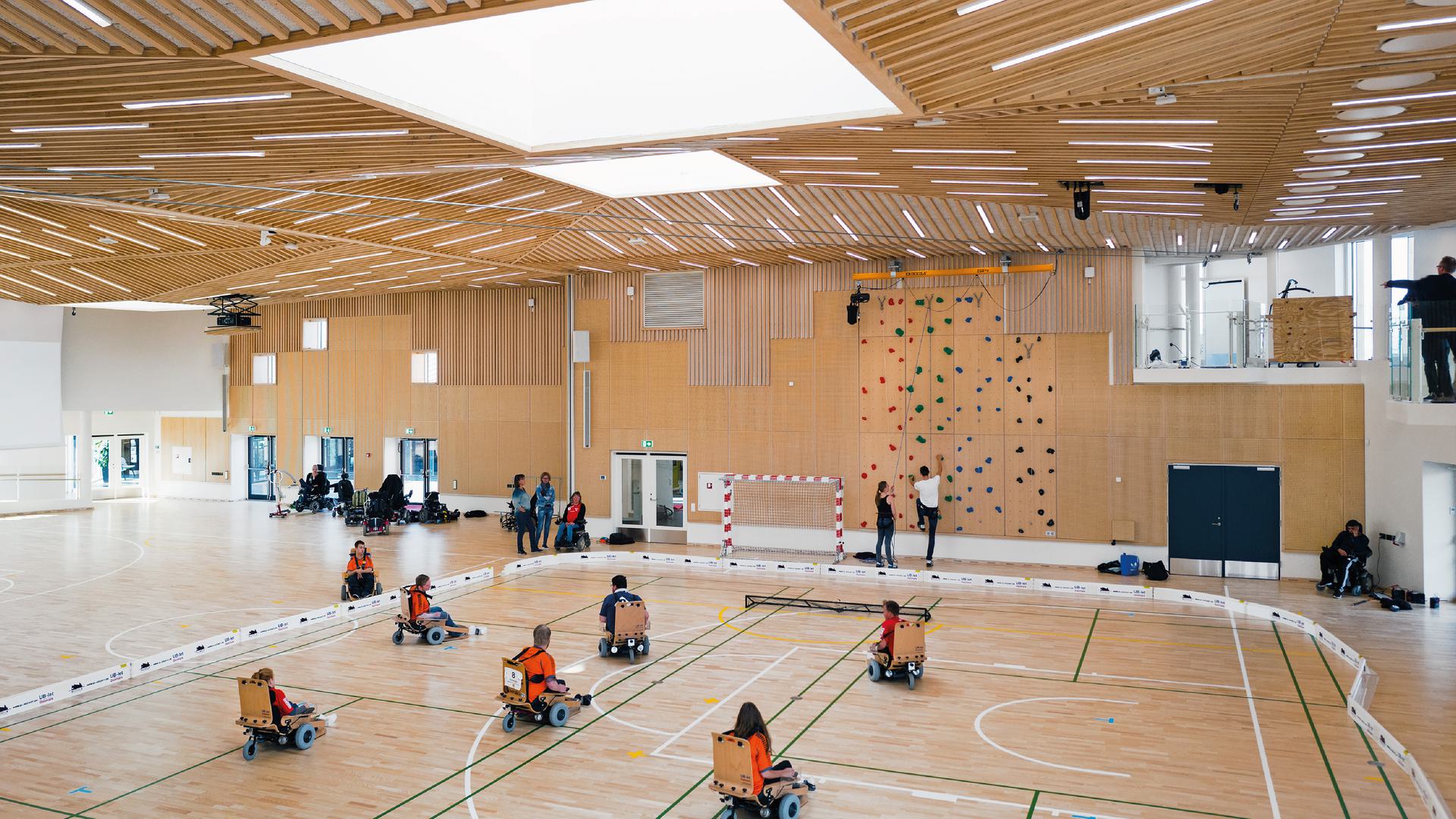
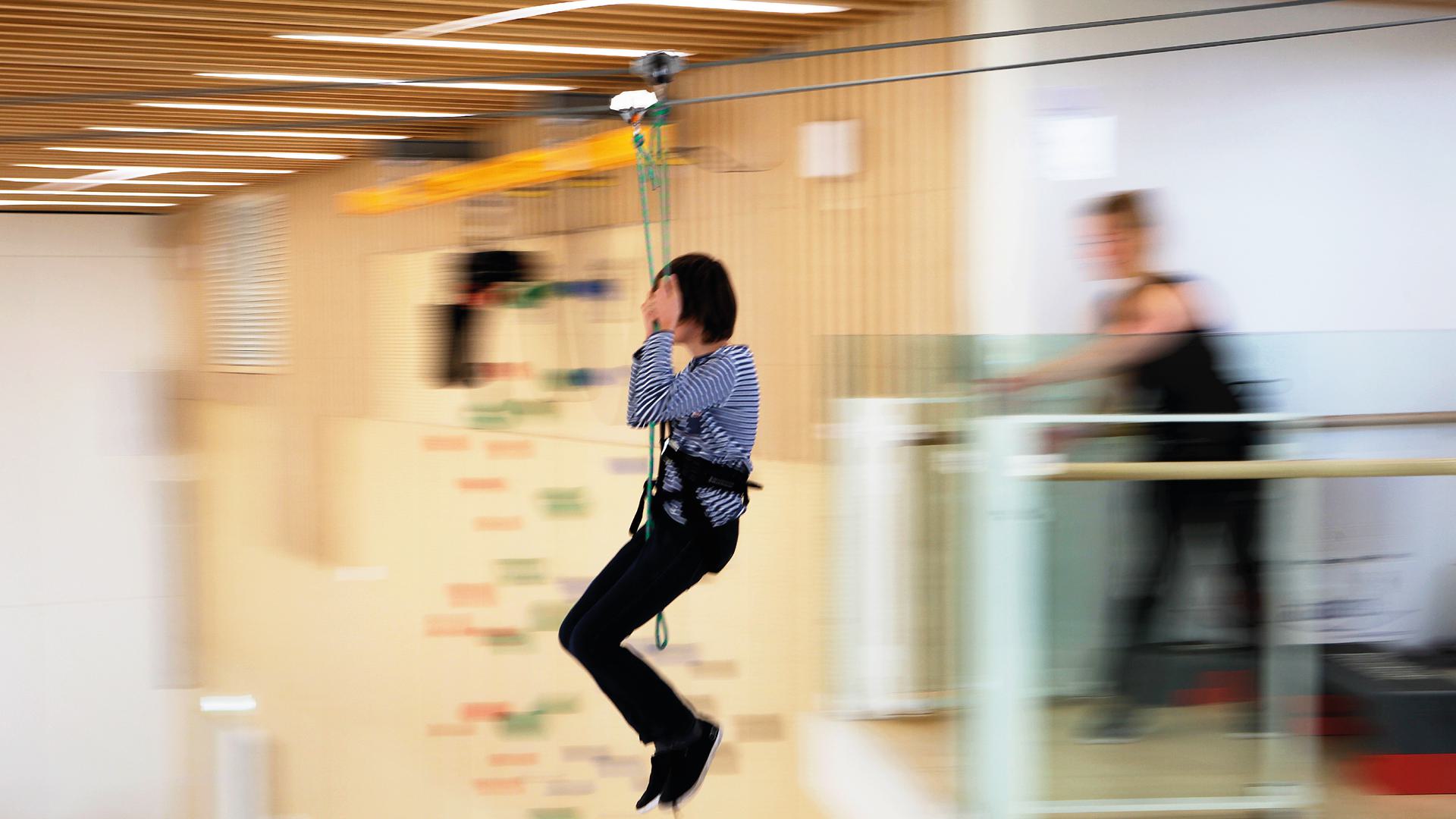
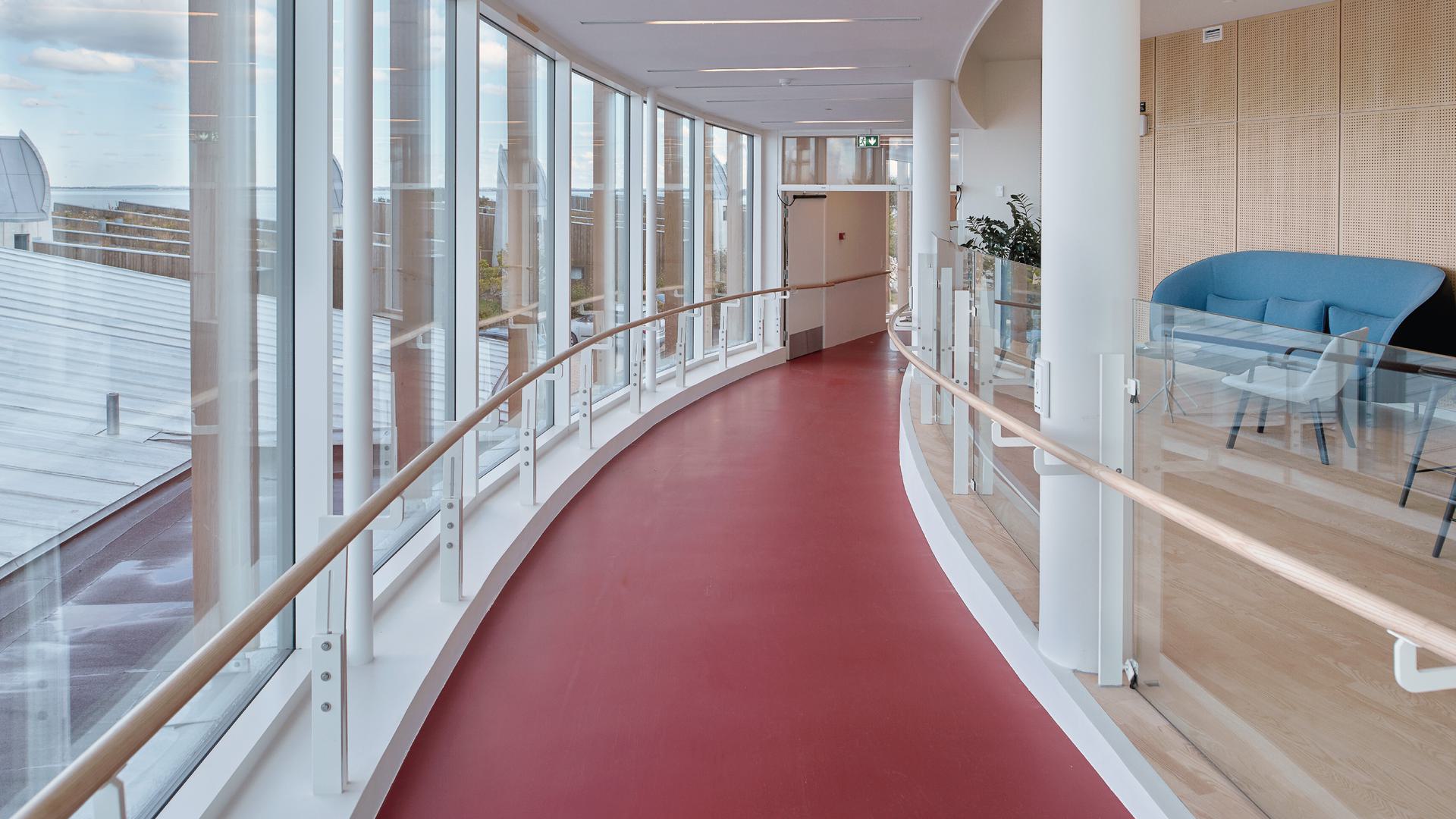
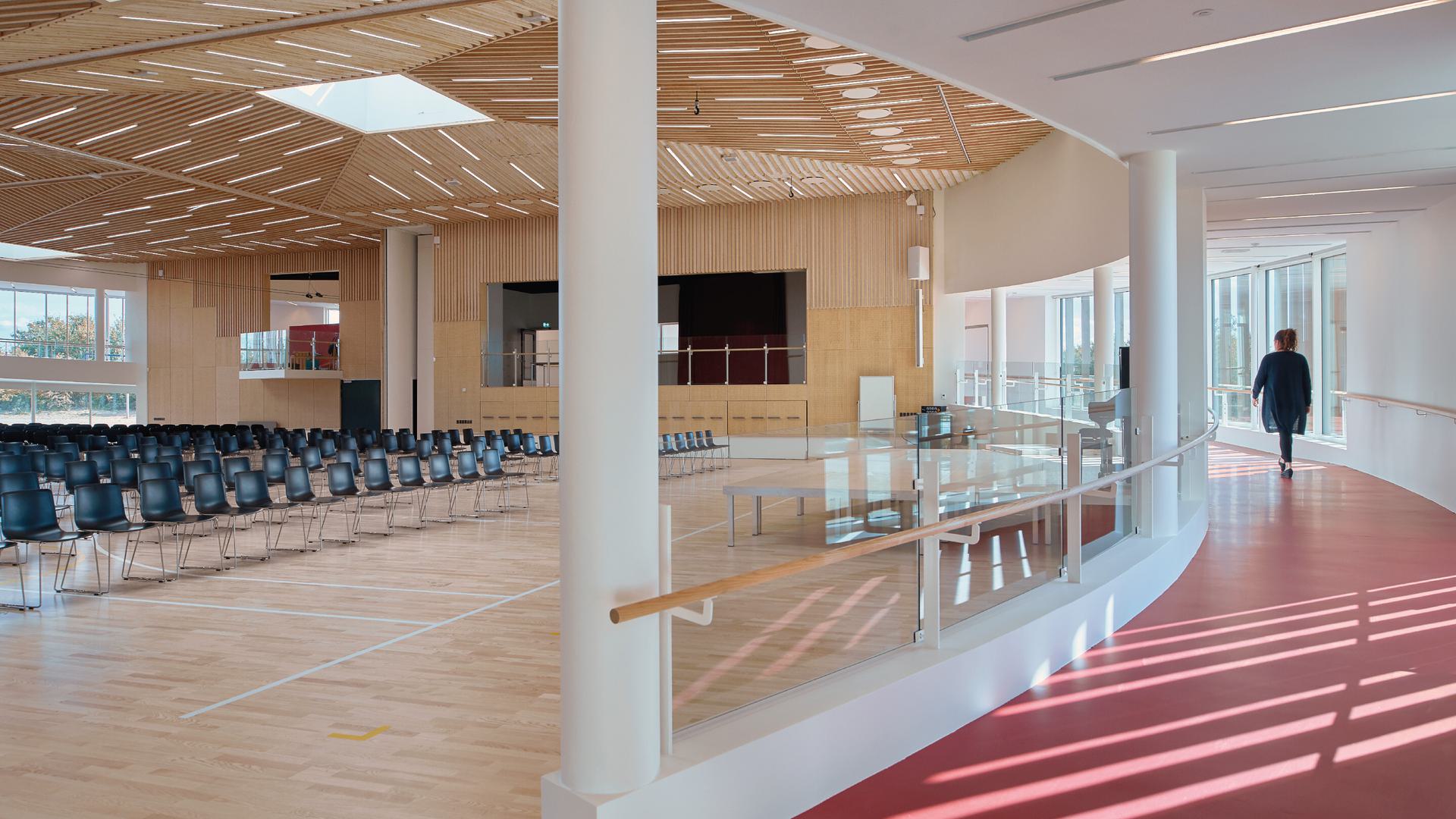

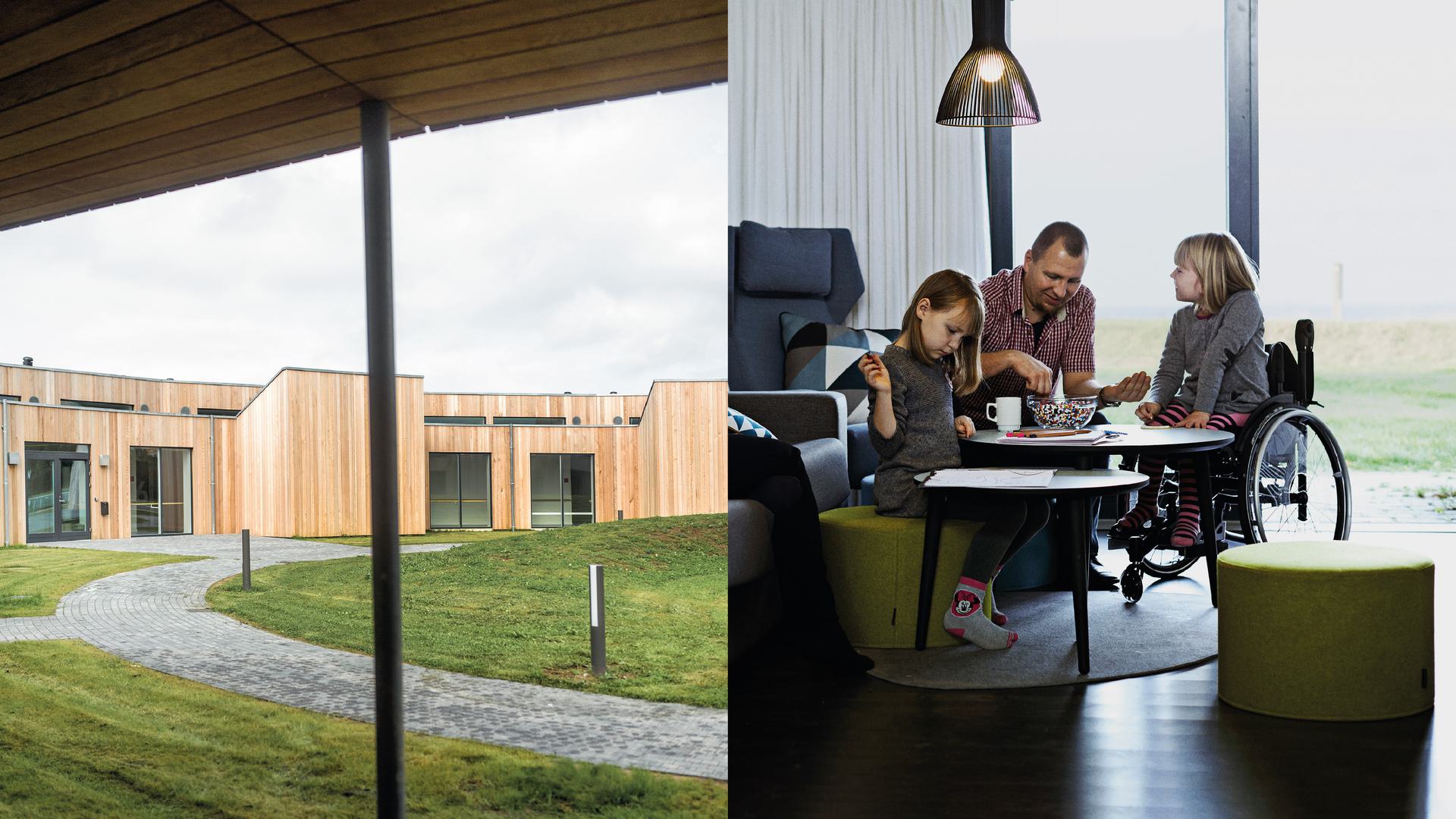
Physical inactivity has a cost
No less than 38 people with mobility disabilities in Denmark are physically inactive. This is equivalent to 95,000 people in Denmark, and the consequences of a life without exercise and movement are striking. After adjusting for smoking, alcohol and obesity, physical inactivity costs up to 6 years of life and upwards of 10 extra years of illness, and the many complications associated with physical activity result in 710,000 additional doctor’s visits and 280,000 somatic outpatient hospital visits every single year. On an annual basis, this corresponds to extra costs of DKK 5.3 billion just for treatment and care in Denmark.
Eliminates physical barriers
Musholm accordingly tackles a major societal challenge, aiming to show how architecture can promote physical activity for people regardless of their disabilities. Every second person with a disability highlights their physical surroundings as the primary barrier to living an active life. Musholm therefore serves as an example of how one can remove physical barriers so that buildings and urban spaces increasingly embrace the differences that make us human - not by smoothing out those differences, but instead by being more inclusive.
When people with disabilities are made out to be ‘special’, it isn’t because their disability is what makes them different, it’s because of the entirely banal reason that their surroundings create barriers that stand in the way of equal opportunities for people with disabilities to live an ordinary life.Bengtson, Steen, Storgaard Bonfi ls, Inge og Olsen, Leif (2008): Disability and equal treatment in practice
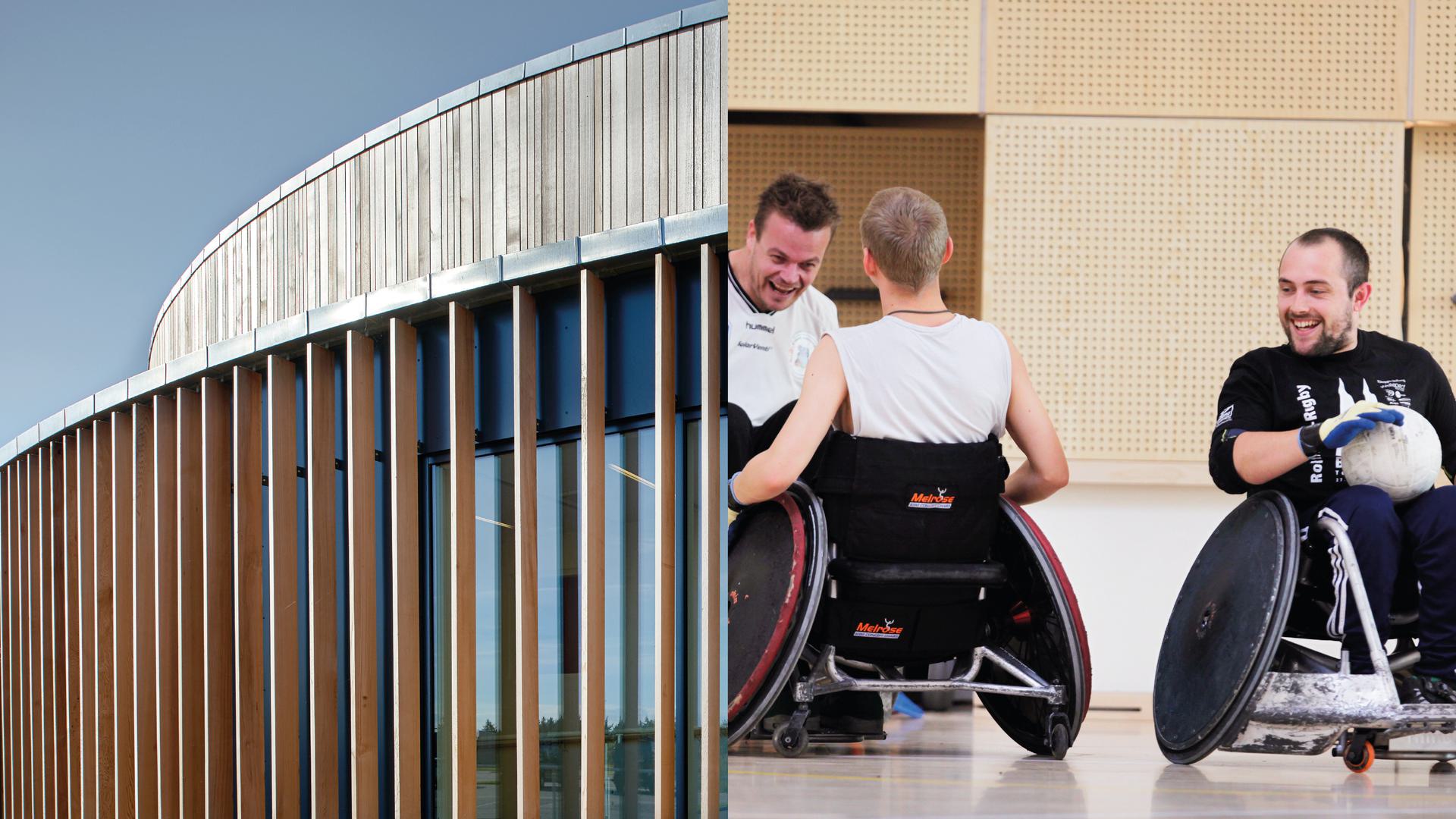

The economic benefits of making a social difference
Making a social difference comes with major socio-economic implications. As already touched on, the physical environment of people with disabilities is crucial to their ability to lead an active life. And if, through a focused intervention - where Musholm can serve as an example - one could increase the activity levels of people with disabilities to the same levels of people without disabilities, that would be the equivalent of helping 45,000 people move from an inactive to an active life. Even after revising that figure down to 35,000 - which is more accurate as some are so physically disabled that they are unable to exercise - Danish society would save more than DKK 300 million a year on healthcare costs.
Arkitekturpriser
IOC/IAKS Award
The International Olympic Committee honours Musholm for being one of the world’s best sports facilities at the IOC/IAKS Distinction Awards in Cologne.
IPC/IAKS Distinction Award
The International Paralympic Committee honours Musholm for being one of the world’s most accessible sports facilities at the IPC/IAKS Distinction Awards in Cologne.
IAUD Award
Musholm receives an award from International Association of Universal Design for being the world’s most socially inclusive place at the IAUD Awards in Japan.
Architizer +Award
Architizer nominates Musholm as one of the world’s most visionary sports buildings at the Architizer +Awards ceremony in New York.
WAN Sport in Architecture Award
World Architecture News nominates Musholm as one of the world’s best sports buildings at the WAN Awards ceremony.
Slagelse Municipality Building Award
Slagelse Municipality honours Musholm for beautifying the built environment in the municipality at the annual building awards ceremony.
Sources
Danish Health and Medicines Authority, Facts about physical inactivity, 2015 / The Alexandra Institute, Anthropological field study of Musholm, 2016 / Danish Ministry of Culture, Idræt for alle, 2009 / The Danish Disability Council, People with disabilities in Denmark, 2014
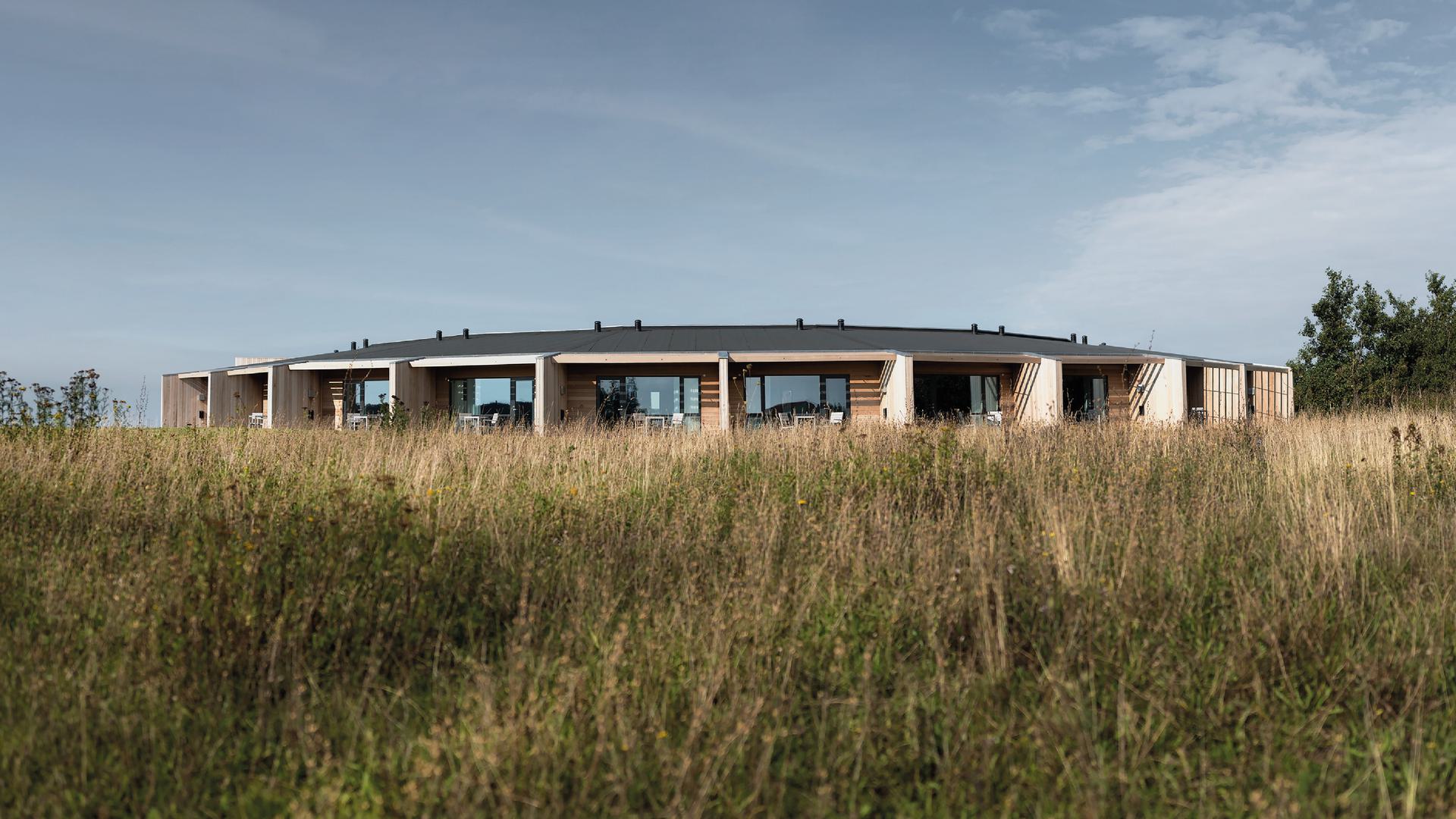
Want to know more?

